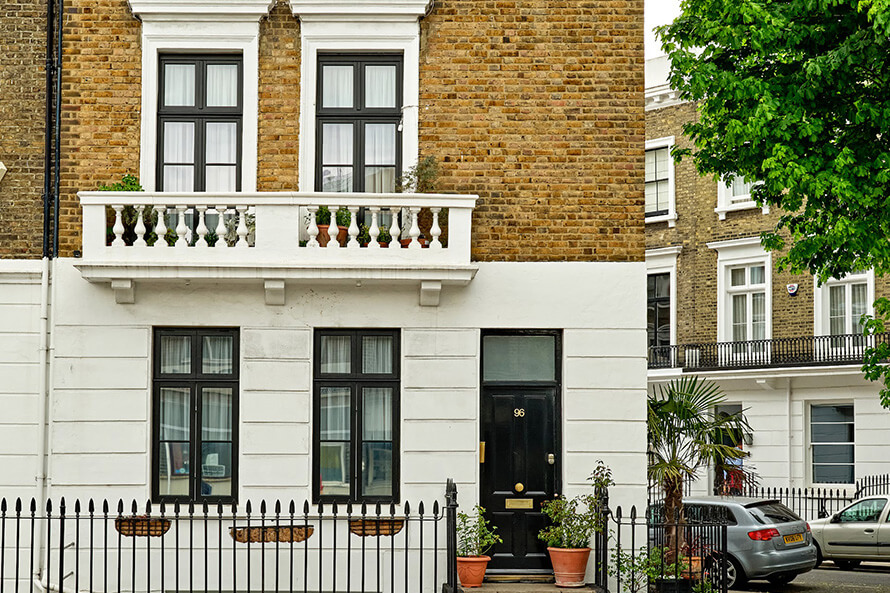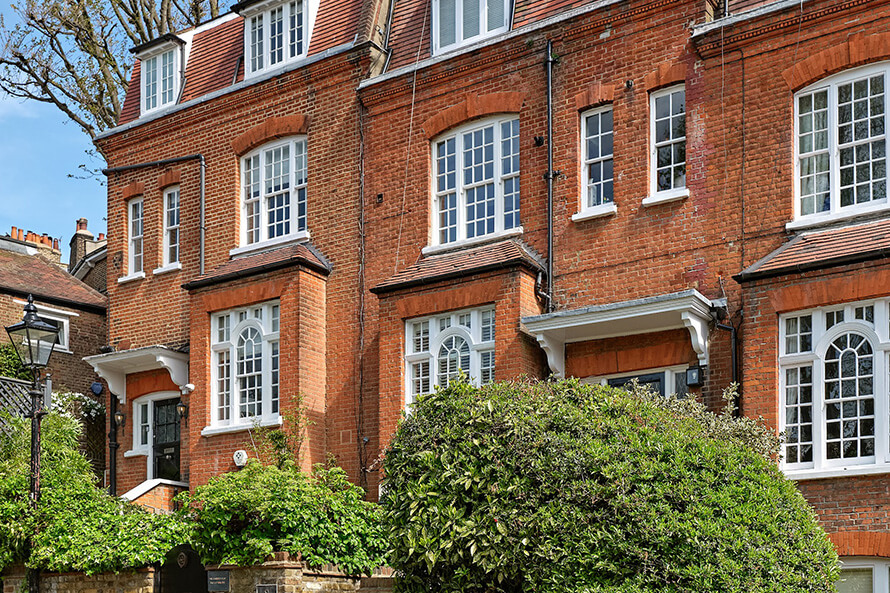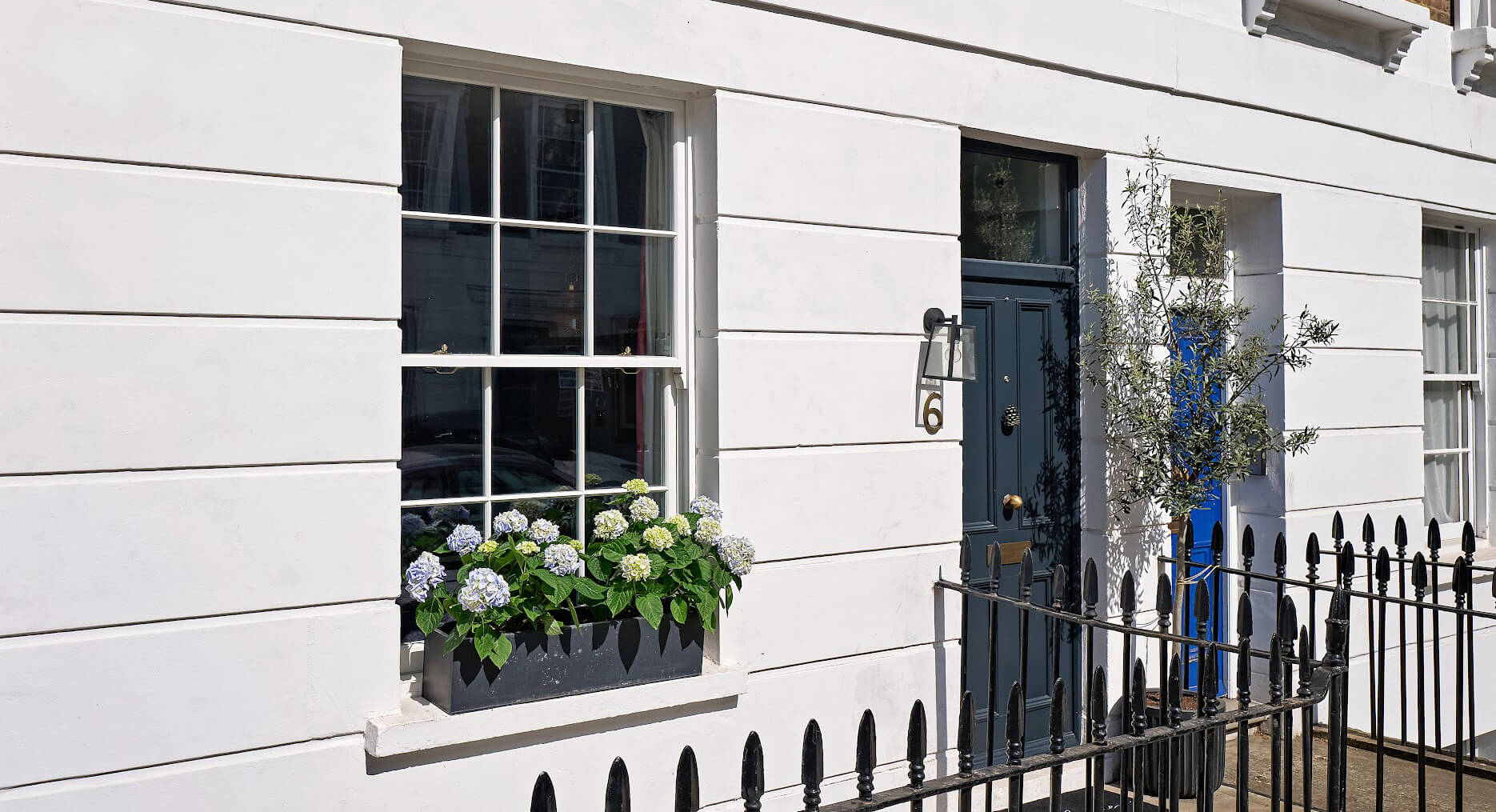About this guide
This guide has been created based on our experience of working within the various London boroughs, but the same logic and rules loosely apply across all of England, Scotland and Wales. It is intended for guidance only, you should always check with your local authority before making any alterations to your home.
Do I need planning permission to change windows and doors in London?

The answer to this question depends on where you live and the type of property you live in. The rules are different for each of the following four categories:
- Houses and flats which are NOT in a conservation or listed
- Houses which are in a conservation area and not listed
- Flats which are in a conservation area and not listed.
- Listed buildings of all grades (houses, flats, and commercial buildings)
A brief description of rules for each category is below, please note that this is for guidance only and if you are unsure about the rules that govern your property please contact your local planning authority.
Category 1 - Houses and flats which are NOT in a conservation area or listed.
The Quick Answer: Planning permission is NOT required for dwelling houses. Planning permission is USUALLY NOT needed for flats, but this is decided at local level and is at the discretion of your local planning authority.
You do not normally need planning permission to change your windows and doors as this is considered ‘permitted development’ for dwelling houses.
Flats do not ‘technically’ benefit from permitted development for any changes, however windows and doors are usually the exception, but this is at the discretion of your local planning authority. Taking Westminster as an example, if you own a flat which is not in a conservation area and you want to replace your old single glazed timber sash windows with new ‘like for like in appearance and material’ timber sash windows then Westminster will not usually require a planning application. If you wanted to replace your windows with uPVC then Westminster may ask for a planning application to discourage the use of uPVC windows in period housing.
In summary, you are free to change your windows and doors without any formal permissions. It is worth noting that all replacement windows and doors are within the scope of building control regulations. This means that replacement windows or doors must comply with thermal performance and safety standards. If you choose a FENSA registered company to install your new windows or doors then the installer must ensure that your new windows conform to building control regulations and certify them with your local authority’s building control office.
Category 2 - Houses which ARE in a conservation area and NOT listed.
The Quick Answer: Planning permission is NOT required to replace the windows and doors in dwelling houses, on condition the new items are ‘like for like in materials and appearance’. Timber must be replaced with timber, and sliding sash window with a sliding sash window.
You do not normally need planning permission to change your windows and doors if your property is a dwelling house (not a flat or maisonette) in a conservation area on condition that they are ‘like for like in material and appearance’. This means if your outgoing windows are made of timber then your new windows must be also made of timber, and if your outgoing windows are sliding sash windows then so must the new ones be.
There is however an exception to this, if your property is covered by an Article 4 Direction then you will need planning permission in all instances. The effect of an Article 4 direction removes permitted development rights from a property and a planning application is required for developments that would otherwise not require an application. In general planning applications for Article 4 properties are only approved when the change of windows is ‘like for like’ in both style and materials.
Category 3 - Flats and maisonettes which ARE in a conservation area and NOT listed.
The Quick Answer: Planning permission is NOT TECHNICALLY needed for flats and maisonettes to replace the windows and doors on condition the new items are ‘like for like in materials and appearance’. However, each local planning authority has a local policy regarding flats and offices and they may require a planning application.
Planning rules for flats, maisonettes, and commercial buildings differs to that which covers dwelling houses as they do NOT technically benefit from permitted development and therefore you need planning permission for any changes. However, windows and doors are usually the exception to this, but again this depends on your individual local authority. Local authority policy and interpretation of the rules covering changing windows in flats varies from council to council and you are advised to contact your local planning authority for advice before starting work. The majority of local authorities in London and the rest of England have the following policy:
If your property is a flat in a conservation area then you do NOT need to apply for planning permission to change your windows and doors on condition the new items are ‘like for like in material and appearance’. This means if your outgoing windows are made of timber then your new windows must be also made of timber, and if your outgoing windows are sliding sash windows then so must the new ones be.
There is one exception, if your property is covered by an Article 4 Direction then you will need planning permission in all instances. An Article 4 direction is a special planning regulation adopted by a local planning authority. It removes permitted development rights from whatever is specified in the Article 4 direction.
Category 4 - Listed buildings of ALL grades, both houses, flats and commerical buildings.
The Quick Answer: Yes, planning permission and listed building consent is needed in every instance.
If you live in a listed building you will need planning permission and listed building consent to change your windows and doors, this includes re-glazing of existing frames. The rules around replacing windows and doors in listed buildings are strict and for good reason, as they are designed to protect our architectural heritage. Historically, planning permission for replacement windows and doors with double-glazing have mainly been refused. Vacuum glass offers a solution that will usually gain permission for most Grade 2 listed buildings, see our Listed Buildings page for more details on how we can help. For Grade 2* and Grade 1 properties it is difficult to get permission to change the windows and or the glazing, usually only single glazing is acceptable. In addition, your conservation officer may insist on traditional ‘hand-drawn’ glazing, this glass is handmade and has ripples and imperfections in it.
In general planning permission to replace your windows and doors is only granted in listed buildings when the existing windows the new items are identical in appearance, in materials, and the new items have heritage appropriate glazing such. You will not be allowed to change materials, such as timber to uPVC or the appearance of the windows or doors.

Can I use double glazing in my period property which is NOT listed?
You are permitted to use double glazing in a period property without planning permission, regardless of whether you live in a conservation area or not. However you will need to apply for planning permission if you are in a conservation area with an Article 4 Direction. The decision on glazing is with your local conservation officer who may want to maintain original details (such as slimline-glazing) and compromise energy efficiency in order to preserve character. Therefore, it is advisable to meet the conservation officer prior to a full application to discuss all the options available.
Can I use double glazing or vacuum glazing in my period property which IS listed?
The answer to this question depends on various factors, such as your listing type, your local authority, and whether your windows and doors are historic or not.
Grade 1 and 2* listed buildings typically cannot use any form of double glazing in replacement windows, nor replace windows that have historical significance, such as those that are original to the property’s construction. While the same restriction typically applies to Grade 2 listed buildings, they may be permitted use vacuum double glazing. However, it is usually preferable to use heritage-appropriate glazing like ultra-thin vacuum glazing. Ultimately, your local conservation officer will decide which type of glazing is appropriate, so it is advisable to discuss with us the best course of action before submitting a full application. The preservation of historic windows and avoiding any “harm” from changes are taken into account, and each planning officer can have their own interpretation of what constitutes harm. In summary, replacing windows in a listed building can be challenging, but its NOT not impossible.
Still unsure?
We’re very proud in being a timber only company, helping to preserve our architectural heritage. If you have any questions about your options we are happy to help, over the phone on 020 3198 4472 or via email hello@sashed.com.
Did you know we also offer planning services, check out our page
Planning permission services to change windows and doors for more details.


 Customer Projects
Customer Projects Gallery
Gallery Our Showroom
Our Showroom Listed Buildings
Listed Buildings Request a quote or book a survey
Request a quote or book a survey